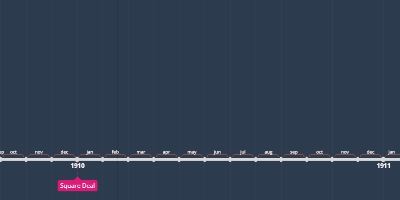7h 14min, jan 1, 1906 y - Teddy Roosevelt, Conservation
Description:
As a boy, Theodore Roosevelt wanted to be a naturalist, a scientist who revels in and examines nature. As an adult, the president never forgot his childhood dream, and preserved vast regions of the U.S. for future generations of Americans.As a young man in the Dakota Territory, Roosevelt saw firsthand how human activities could harm the environment. Completion of the Transcontinental Railroad in 1869 had pushed civilization westward, and rail lines and the towns that build up around them cut gashes through the pristine grazing lands of the buffalo or bison. Buffalo were being killed on a vast scale for their highly valued hides, and the trains made it easy to transport the hides to market. In just two decades, the great bison that once had thundered across the plains were driven nearly to extinction, with just small bands roaming in areas where great herds used to darken the prairie as far as the eye could see. By the time Roosevelt wrote about them in 1893, fewer than 500 wild buffalo existed, and no herd of more than 100 had been seen since 1884.
Roosevelt, an avid adventurer and lover of nature, dedicated himself to protecting both wildlife and natural resources. He recognized that without dramatic action, the rich natural resources and incomparable landscapes of our country would disappear as quickly as the buffalo, leaving future generations without a legacy of natural splendors.
Theodore Roosevelt is often considered the "conservationist president." Here in the North Dakota Badlands, where many of his personal concerns first gave rise to his later environmental efforts, Roosevelt is remembered with a national park that bears his name and honors the memory of this great conservationist.
Theodore Roosevelt first came to the Badlands in September 1883. A sportsman-hunter all his life, Roosevelt sought a chance to hunt the big game of North America before they disappeared. Although his writings depict numerous hunting trips and successful kills, they are laced with lament for the loss of species and habitat.
The decimation of bison, and the eradication of elk, bighorn sheep, deer and other game species was a loss which Roosevelt felt indicative of society's perception of our natural resources. He saw the effects of overgrazing, and suffered the loss of his ranches because of it. While many still considered natural resources inexhaustible, Roosevelt would write:
We have become great because of the lavish use of our resources. But the time has come to inquire seriously what will happen when our forests are gone, when the coal, the iron, the oil, and the gas are exhausted, when the soils have still further impoverished and washed into the streams, polluting the rivers, denuding the fields and obstructing navigation.
President Theodore Roosevelt was one of the most powerful voices in the history of American conservation. Enthralled by nature from a young age, Roosevelt cherished and promoted our nation’s landscapes and wildlife. After becoming president in 1901, Roosevelt used his authority to establish 150 national forests, 51 federal bird reserves, four national game preserves, five national parks and 18 national monuments on over 230 million acres of public land.
Added to timeline:
Date:
7h 14min, jan 1, 1906 y
Now
~ 119 years ago
